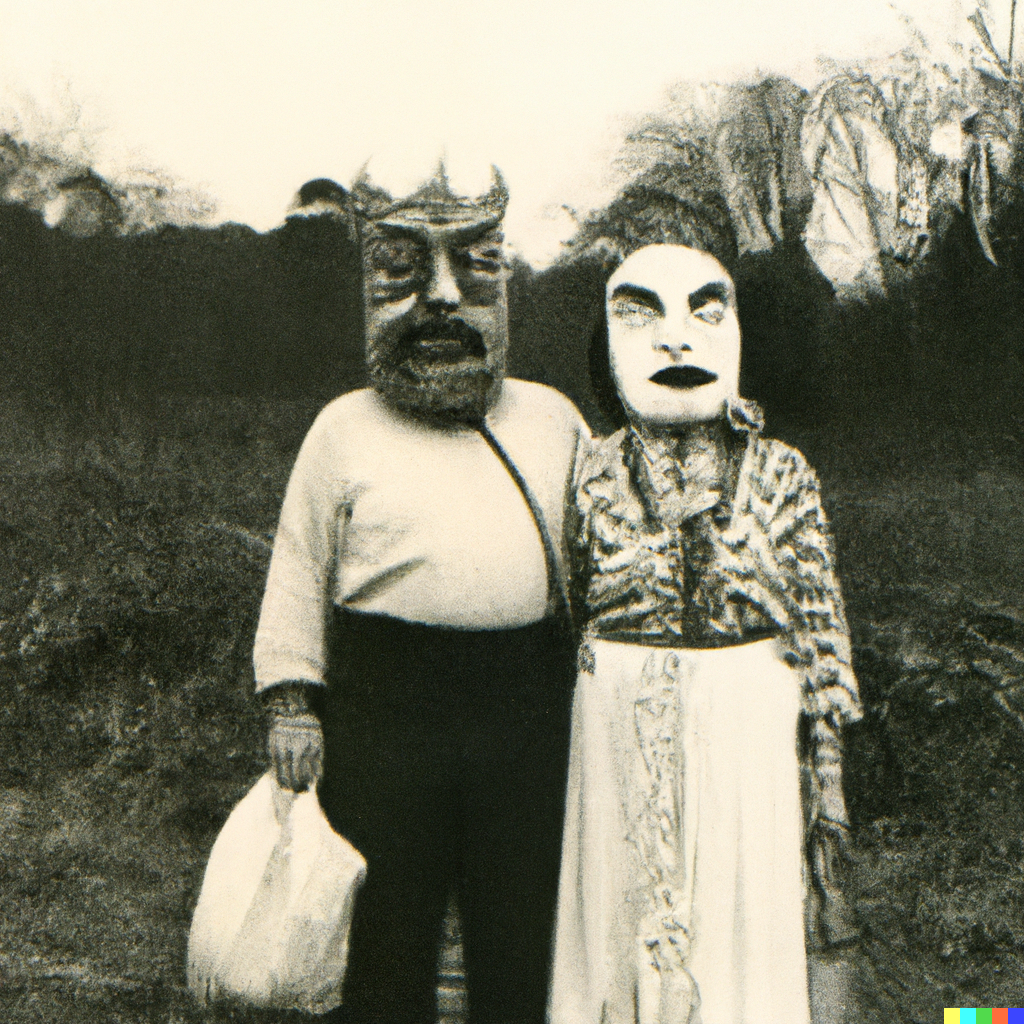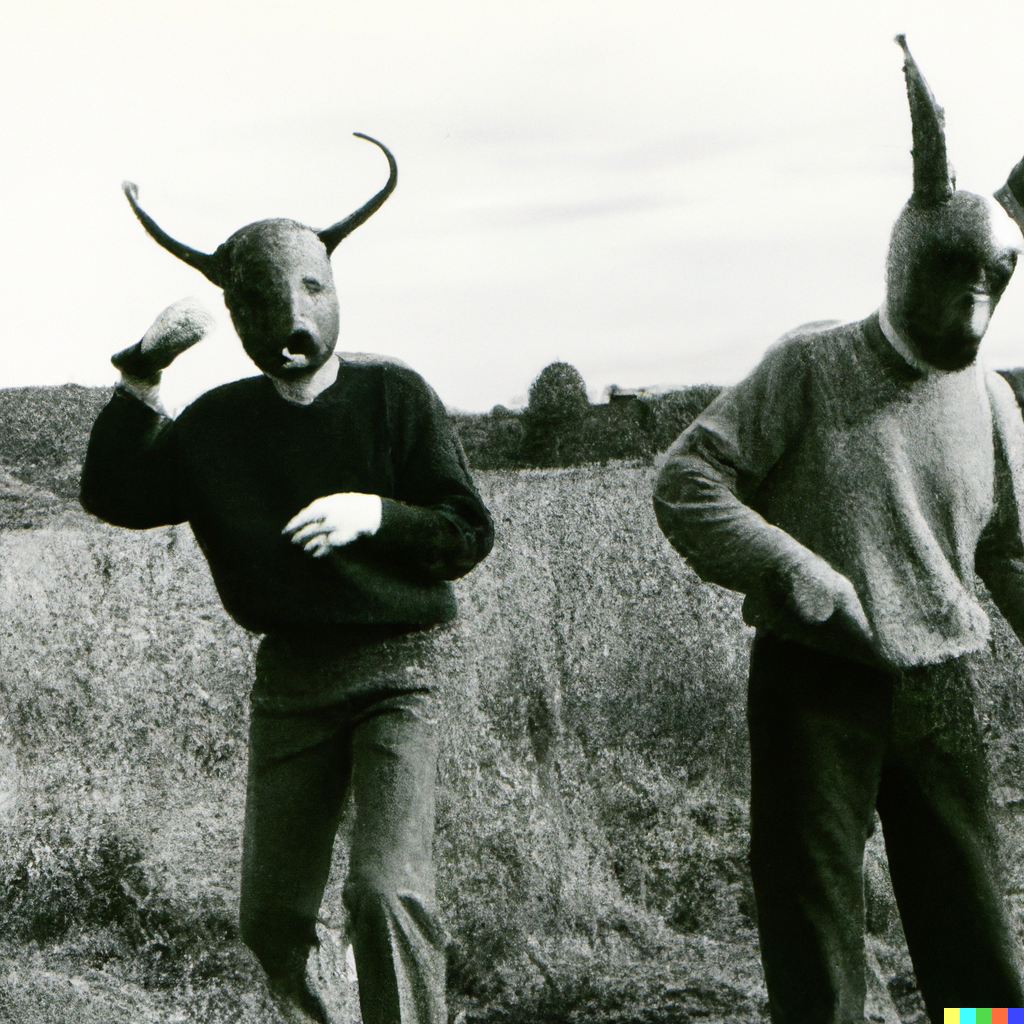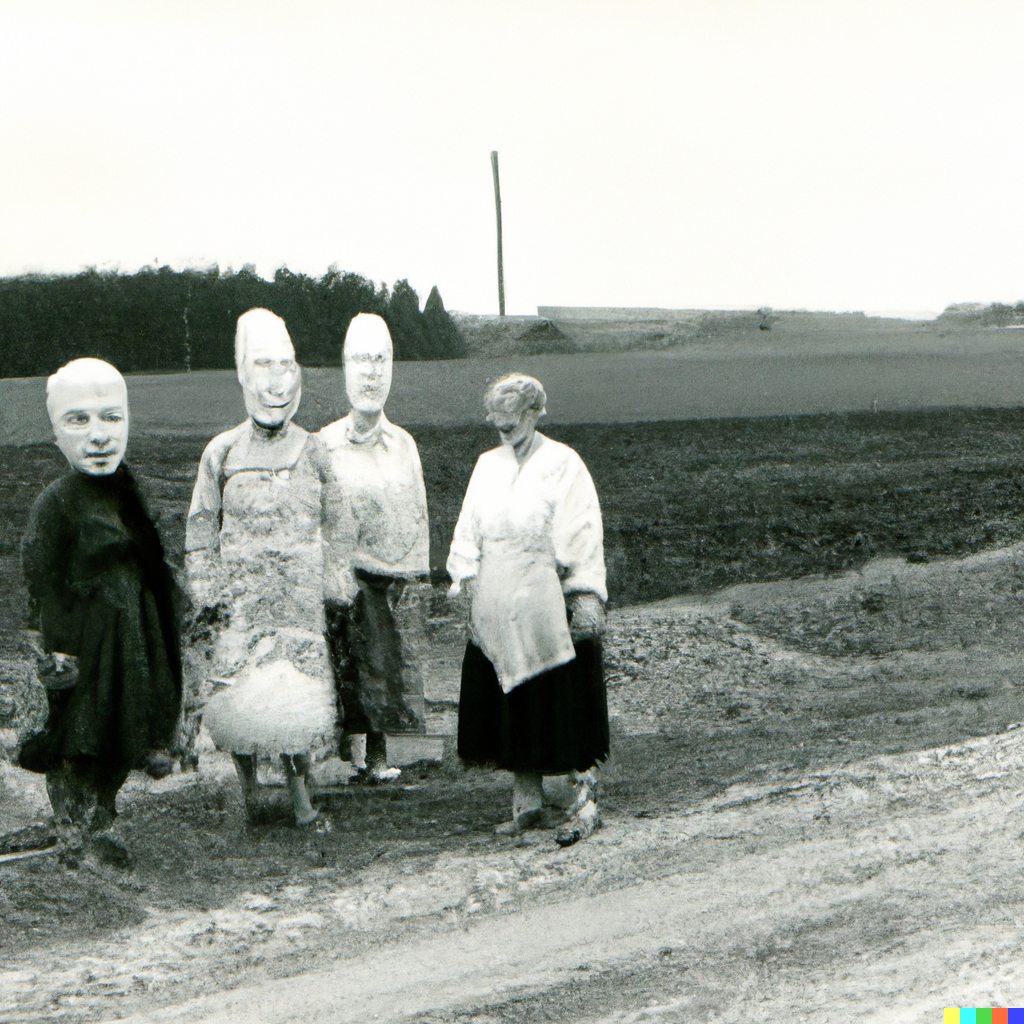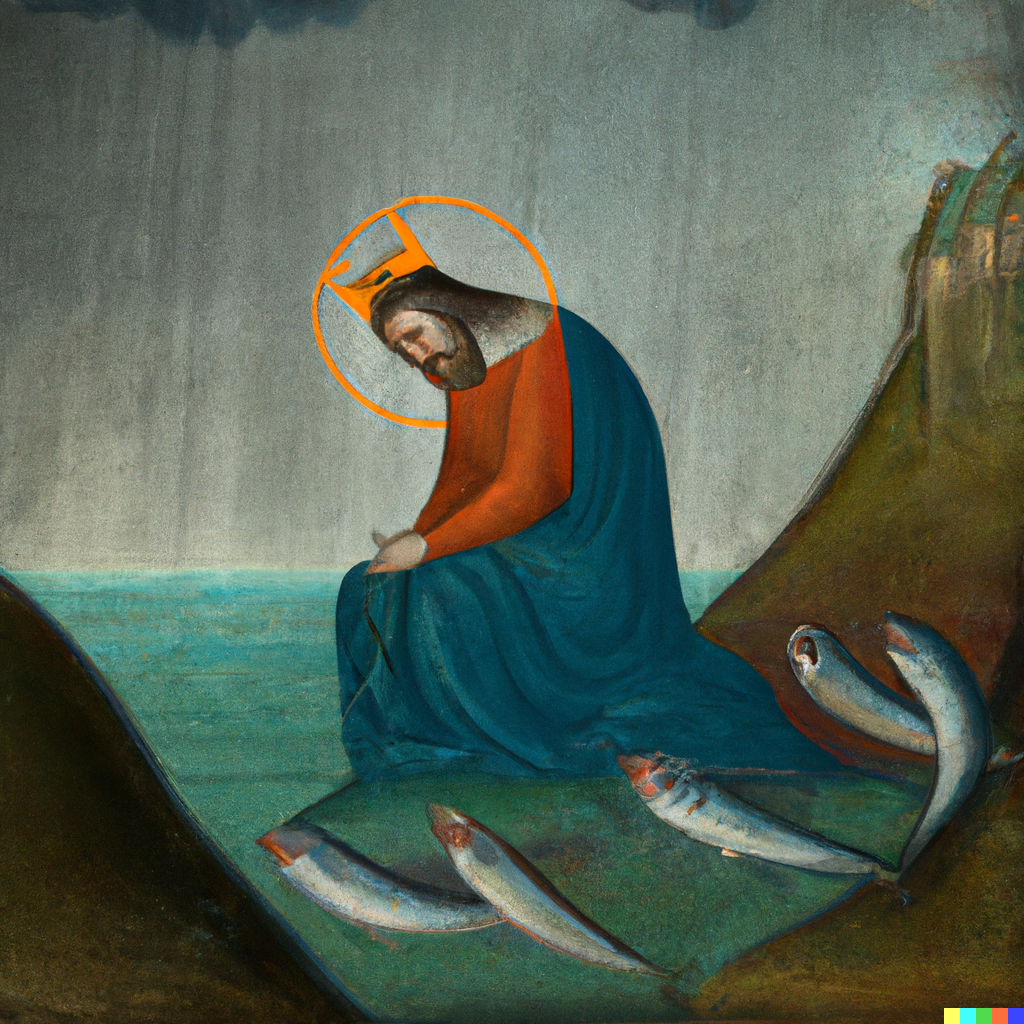A couple of weeks ago, there was a flurry of news (for example, the Guardian) on how Boris Eldagsen refused the World Photography Organization’s Sony World Photography Award in the Creative Open category that he won for his AI image “The Electrician.” As the Guardian piece notes, Eldagsen’s intent was to question whether the competition would accept AI Art blithely and, prior to being announced as a winner, he made it clear (as his site does) to the competition organizers that the work was AI-generated.
Let’s look at the photograph for a minute. I suppose I shouldn’t reproduce it here without permission (I’ve asked and will add it if I get a positive response). You can view it on the artist’s site which gives an idea of his work in context.
Eldagsen’s description of the series this belongs to, Pseudomnesia, interests me. The term is Greek for pseudo-memory or fake memory, and of course AI imagery is ideal for creating fake memories. In that sense, his work is not unlike my Critical AI Art project, although I would like to know more about the intent behind the specific imagery. The artist explains, “Just as photography replaced painting in the reproduction of reality, AI will replace photography. Don’t be afraid of the future. It will just be more obvious that our mind always created the world that makes it suffer.” Eldagsen is an enthusiast of AI image generation (what he dubs “promptography”) and he argues that it should have a separate category in competitions such as this one.
Questions arise immediately. Were the judges aware it was an AI-generated photograph? If not, why were they judges in a photography competition? The hands are clearly off, with fingernails only appropriate for Joan Crawford, Disney villainesses, and strippers. There is an over-smoothed aspect to parts of the image and then other parts are grainy, giving the image an uncanny-valley feel. The surface damage is strange: one of the scratches appears to be a reflection in framing glass. From a narrative point of view, it doesn’t make much sense. It looks like the woman on the right is getting her clothes adjusted, but why is the other woman cowering behind her? Whose hand is the top right one? Is this last-minute preparations for a wedding or an execution (the image is intended to be in “the visual language of the 1940s”)? Why is it called “the Electrician”? I suppose those enigmas are part of the attraction to the image.
As far as the competition goes, I’ve never heard of it before. The work that they award (reflective of is submitted?) tends to rather boring, the sort of thing found in photography magazines that have lots of product reviews and are read by people who have never heard of New Topographics, but operate websites selling giclée prints. At least there wasn’t much HDR, itself a scourge on the arts. I wonder if the judges were aware that the photograph was generated by Dall-E when they deliberated these works? Possibly not. If they were aware, I’d think they would say so, but in this interview, Eldagsen states “I thanked them later for choosing an AI-generated image and they were all quiet because they did not really want to talk about it.” Again, most of the premiated work isn’t fine art photography, at least nothing I would be interested in, but rather merely technically proficient. What were the criteria for selection? All unclear. Eldagsen neither mentions that he fooled the judges nor that the discovery of this work as AI led to his refusal of the prize, so it’s hard to tell. Nevertheless, his own goal appears to emulate Marcel Duchamp’s submission of a urinal he titled “Fountain” to the 1917 Society of Independent Artists Exhibition and his subsequent resignation from the Society after they refused to acknowledge the urinal as art. Instead of outrage, however, the interview points out the competition’s comic ineptness at communication and publicity management, something which Eldagsen is clearly better at.
Regarding AI image generation, Eldagsen is correct. There is no stuffing the genie back in the bottle. AI image generators and filters are here and already defining photography and art in general. But when we think about the vast amount of imagery produced by smart phones—much more than with digital cameras—we already do produce most of our imagery via AI, as this blog post from Apple shows. Although the iPhone’s photographic ability is seductive, it is also very much the product of built-in machine learning algorithms and, in trying to achieve an ideal image, permanently sacrifices accuracy for image quality, something Kyle Chayka points out in this article at the New Yorker. The result, for many, is indeed self-inflicted suffering: filters and machine learning algorithms are leading people to experience body dysmorphia and then drawn, in the manner of the Kardashians, to seek needless, disfiguring surgery or suicide (see Elle Hunt’s piece in the Guardian).
Such ruminations quickly get us into the territory of philosophy and cognitive science. Our brains already apply processing to vision, for example in masking the “mini-blackouts” from blinking and apply something akin to a physics-based video stabilization to smooth out movement.
Thinking about AI image processors, I am floored by how fast they have developed during the last year. Eldagsen made his image “in 2022 with early Dall-E,” which is vastly inferior to what can be done with Midjourney 5 these days. Take three examples from summer 2022, when I was exploring a series about a fictional visit to Lithuania by photographer Ralph Eugene Meatyard. All are produced with Dall-E.



While they recall the Lithuanian countyside and Meatyard’s approach, they break down in many places, glitching in ways I quite like. The second image and third images are poorly framed. The landscape in the third image becomes too geometric. The rightmost figure in the third image is microcephalic and perhaps leperous. And so on.
Here are some new examples. I didn’t spend long on them. These are hardly finished in my book. It wouldn’t be hard to take them into Photoshop and get them to match Meatyard’s work better. I may yet do that, as I am pondering a piece on an alternate history of Lithuanian art between 1965 and 1980.



The situation with painting is even more dramatic. Take my Doggerland project.

Much as I love this primitistic image of Cnut VI’s lament made with Dall-E in August of 2022, compare it to either of the images I made last night with Midjourney. Again, I haven’t spent any time with Photoshop or inpainting.

Inpainting would take care of that child crushed under Cnut’s coracle-throne and it could be good to muck up the water and clean up the sky a bit.

Well, ok, so in this painting we see Jesus not Cnut, but still it’s a pretty amazing image overall, nothing that some inpainting can’t cure.
I am now faced with decisions about my Critical AI Art projects. While the Witching Cats and Boxmaker works were done with second generation AI image generation services, Doggerland and the Canals of Vilnius could be revised. I likely will do so, but this means potentially all of these works could require a lot of maintenance as these services upgrade and image generation increases in quality.
Constant upgrades have been the case with photography for some time as well. My current generation of cameras, able to capture at least 40 megapixels and, in the case of my workhorses, the Sony A7RV or Leica M11, over 60mp (not to mention the Fuji GFX100S), now have enough resolution that I can’t imagine needing more. Of course 24mp seemed like plenty just a few years ago when I primarily shot with a Fuji X-Pro2, but prints have been growing in size as a glance at photography shows demonstrates. Big prints mean higher resolution. And, so earlier images need to be upscaled using Topaz Gigapixel AI.
As I’ve stated before, like most photography, most AI image generation is quite bad and seeing images of Emma Watson, Cannabis Goddess of Mars [*]or whatever nonsense users of these image generators produce will discourage the more weak-spirited from exploring their potential. No doubt many artists will re-entrench in traditional media such as painting, sculpture, video, film, or film photography (while my father would have been shocked to hear me call film photography a traditional art form, acrylic paints, which he used, are a century newer than photography). The Right, which barely makes anything that can be considered art, will seek to make “trad” art, while the Left will make angry paintings about identity to provoke them. But those are both rearguard movements. Media are developing more rapidly than any time in my entire life. Artists and critics need to engage AI image generators critically on their own terms, not lament for simpler times.